The McKenzie's Official world tour site
| | Sun | Mon | Tue | Wed | Thu | Fri | Sat |
|---|
| 30 | 31 | 1 | 2 | 3 | 4 | 5 | | 6 | 7 | 8 | 9 | 10 | 11 | 12 | | 13 | 14 | 15 | 16 | 17 | 18 | 19 | | 20 | 21 | 22 | 23 | 24 | 25 | 26 | | 27 | 28 | 29 | 30 | 1 | 2 | 3 | | 4 | 5 | 6 | 7 | 8 | 9 | 10 |
Search
Navigation
Categories
|

Saturday, 05 September 2009
On Top of the World...............
Our next challenge was to be the Taylor Highway – otherwise known as the Top of the World Highway.....this would lead us through the Canada Border and to Dawson City in the Yukon Territory. This road was once again unpaved and more challenging than the Dalton Highway as it was muddy, narrow, hilly and windy. For the first part of the journey the weather was lovely and so the views were breath taking. The track was hair- raising in places as it passed along the very tops of the mountains, with narrow passes and no guard rails! Being right hand drive, Phil did not feel honoured at being on the steep drop side of the vehicle for much of the way – especially when the fog and snow hit, as we approached the Canadian border!
Our time in Chicken was fun in this quirky old time gold mining town-the home of the Pedro Gold Dredge. We visited ‘downtown’, with its row of two shops and a western-style saloon Bar. It was very interesting to talk with the locals, and Downtown Chicken proprietress, Susan Wiren, to discover that the community now has around 50 members for the summer months and maybe as few as 5 permanent residents during those fast approaching winter months! As we had a pint in the Saloon, we met local gold miner called Kirk, who now spends about 5 months in Chicken at work and then returns to the warmth (?) of Fairbanks for the winter! There is no electricity, no plumbing, no telephone and post arrives twice a week by Bush plane- to help keep the community of Chicken alive and kicking – and long may it continue.
For our final night in Alaska, we camped along the Top of the World, at Walker Fork Campground-the best state park we have found, to date. The sunset that evening was the most amazing ever – we sat around the campfire and watched as the mountain tops appeared to be on fire, with the blazing burst of colour. Our first aid kit was required (and skills remembered from the first aid course that we both did, before we left on Macswayround), as Ben managed to cut the palm of his hand quite badly, with a knife, when he was busy whittling his wood. As we were in the middle of nowhere, many hours away from a hospital – this was not an option and so Phil cleaned up, added antiseptic cream, and bandaged Ben’s hand up. Phil wanted to put a stitch in it and we think that Ben would have let him but Jemma was having none of it! Ben was a brave soldier and has begun to understand the importance of self preservation in these remote parts!
The journey along the Dawson Highway up to the Arctic Circle and indeed the following journey along the Taylor highway (Top of the World) to Dawson City was a most amazing trip. We have been continuing to drive through some of the most spectacular scenery, with an array of beautiful colours – the most vivid we have ever seen in a natural setting. It has been as if we are travelling through a painted picture, for mile, after mile, after mile! We have caught the autumnal colours at the perfect time and before we get stuck in the snow (hopefully!). The camera has not stopped clicking.......
We travelled through Dawson City – rich in Klondike Gold Rush history, from 1896 when gold was found. This created, arguably, the world’s greatest gold rush stampede, as almost 100,000 people tried to strike it rich in the Klondike gold fields. The town was declared a National Historic Site in the early 1960’s and is it decorated by many brightly coloured buildings and restored cabins. There are tour opportunities and many chances to try your luck at gold-panning!
Back in the Yukon Territory, Canada, we camped at the Klondike River......another fire and more stew!
Leaving early the next morning, we spied two Canadian moose along the water’s edge. We got some miles under our belts before stopping for breakfast with yet another gorgeous view at the Five Finger Rapids Recreation Site! It has been excellent for us to be able to move our home along with us and to change the view out of our breakfast window, each and every day!
After a long drive, but beginning early in the morning (Phil says that this is easier than having to wait for the girls to wake up!), we arrived into Whitehorse and after a few chores we set up camp at the Pioneer RV Park.
1st September, 2009 saw us return south on the Alaska Highway and after a spot of relaxing fishing, our day was to be taken over by the matter of tyres! We had a blow out (actually a completely wrecked tyre) and two broken valves – all on the same day! That makes it 50% of the tyres! Was Nessie trying to go for the record or just telling us that she needs a couple of duvet days?! Hans passed us, and offered help, as we were emptying our fresh water tank, to reduce weight, while we crept along to find a flat place to change the wheel. As he was on a push bike, he was grateful for his drinking water bottles to be filled up! We wish him luck on his adventure from Fairbanks to Vancouver (for this trip!) and for the other routes he has planned in the future too.
So –with a brand spanking new wheel and 2 dodgy valves, Nessie cruised us into Watson Lake for the night. We had a warm welcome at the Downtown RV Park and were able to sort Nessie’s valves out and give her another bath too!
We called back into the Signpost Forest and added another Macswayround sign to the collection – one that Phil had prepared earlier-so now we do have a permanent spot in the forest and Macswayround can live on in there!
As Nessie was clean and rested – we decided to hit another unpaved route along the tracks to Hyder....we found a most beautiful camp spot at Boya Lake where the turquoise waters and stunning reflections reminded us of the Croatia lakes that we know and love. The boat was pumped up once more and fun was had by all. There were lots of little islands that the children rowed to and then got out to explore! Later we met Marilyn and Al, who had bought had Angus, Dakota, four dogs and two kayaks with them. Jemma and Ben’s faces lit up, children to play with, kayaks, dogs.........who could ask for more! Jemma and Ben’s charms (or persistence?) soon won the kayaks over and they had a blast! Ben even had Digger the dog sitting on and sometimes in the kayak with him! Obiously a very trusting dog but he could jump ship if he needed to! Those four dogs were the greatest swimmers we have ever seen and absolutely loved their time in the water too! After telling Jemma and Ben that it was far too cold to swim – Marilyn was diving in with a swimming costume on and swam around the lakes for a good hour and a half. We suggested that maybe she should swim the English Channel next!
Saturday, 05 September 2009 18:16:11 (GMT Daylight Time, UTC+01:00)  Alaska | Canada
On Top of the World...............
Alaska | Canada
On Top of the World...............
FACTOIDS:
• Legend tells how miners working over 100 years ago hunted Ptarmigan as a food source, but since they could not spell the grouse’s name – decided to name their new home CHICKEN instead!
• Chicken was once home to 400 gold miners, but when gold was discovered in Dawson City in 1896, most of the miners went east to find their riches.
• The Top of the World Highway brings travellers through some of North America’s most remote and pristine backcountry scenery.
Saturday, 05 September 2009 18:14:56 (GMT Daylight Time, UTC+01:00)  Alaska
On Top of the World...............
Alaska
On Top of the World...............
WILDLIFE HITS (ongoing list):
• Gulls
• Mountain Goats
• Hump Back Whales
• Killer Whales (Orca)
• Sea Otter
• Tufted Puffins
• Horned Puffins
• Arctic Ground Squirrels
• Rabbits
• Arctic Terns
Saturday, 05 September 2009 18:13:43 (GMT Daylight Time, UTC+01:00)  Alaska
Alaska

Tuesday, 01 September 2009
More Alaska pics.......

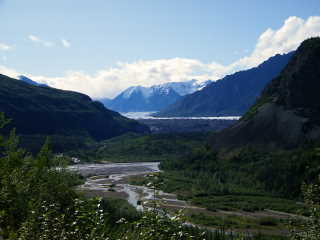
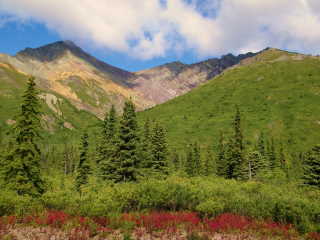
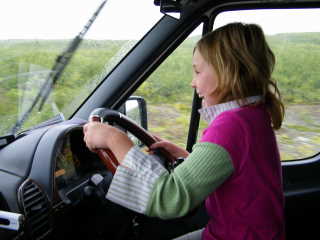
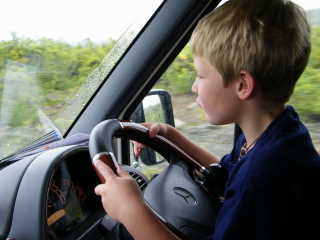
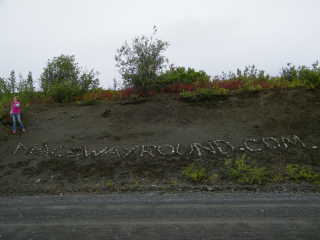


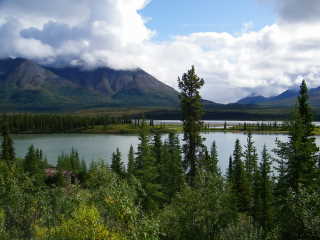
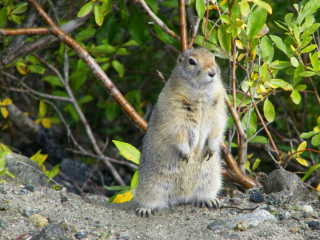
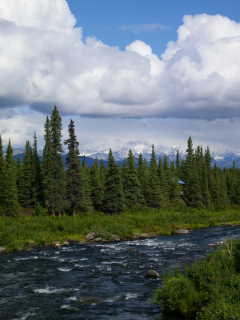


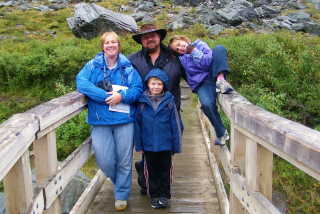
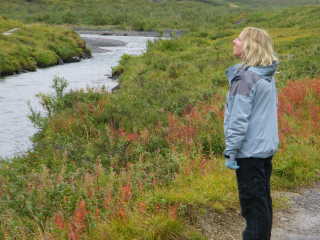
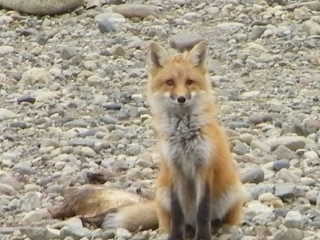
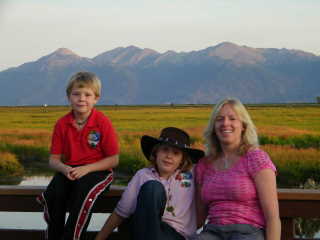
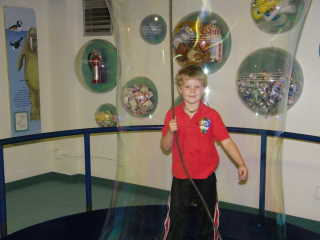
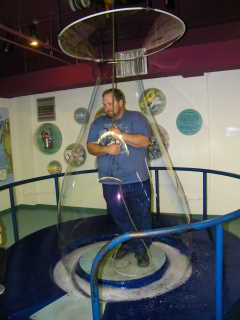
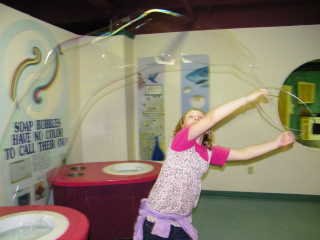 Tuesday, 01 September 2009 08:14:36 (GMT Daylight Time, UTC+01:00)
Tuesday, 01 September 2009 08:14:36 (GMT Daylight Time, UTC+01:00)  Alaska
We made it to the Arctic Circle........
Alaska
We made it to the Arctic Circle........
After bidding Chelle farewell, we took another look at Downtown Anchorage and sampled a reindeer hotdog! The children had fun at the Science Discovery Centre – Imaginarium. Later, at Creekwood, we enjoyed spending time with some locals at the campsite (Garrett, Renee, Daniel, Elizabeth, Joseph and Colt) and the children were entertained with magic tricks.
Heading north bound once again, the clear skies were on our side and we had amazing views of Mount McKinley and the rest of the Alaska Range. At Trapper Creek the World Famous Wal Mikes store was the ultimate in Bric a Brac experience! We stepped back in time and could have spent hours exploring the wide selection of goods on offer! We stayed at the North Viewpoint and Phil even took the tripod and camera up onto Nessie’s roof for a photo shoot – is that dedication or what?!
Further north along the Dalton Highway (or the Haul road) – we went for a distance of about 125 miles on an unpaved track. The truckers were busy with deliveries and it is recommended not to get in the way of these guys! We took the challenge of the most remote and challenging road in Alaska – although to us everything is relative and this road was in much better condition than some of those we have tackled in Eastern Europe. Nessie did, however, take off and perform her very first wheelie at one point, which was interesting!
For us and Nessie to have reached the Arctic Circle was almost a surreal experience. We were on the top of the world and the furthest north that Macswayround would see. We took the necessary photos of us and ‘the sign!’ and then scrambled back into Nessie as the Heaven’s opened. A while later, a couple of Irish lads arrived on motorbikes and Phil offered Steve and Peadar a warm up coffee and a dry awning to shelter their bikes and ‘stuff!’ It was great to meet these guys- both with amazing travels stories of their own. They ended up sharing some roast meat, a film and a wee dram too and kipped the night on Nessie’s spare bed (rather than tackle a tent in the rain!). On this trip they have travelled up from Argentina and are heading to Prudhoe Bay – the point at which the land meets the Arctic Ocean! Take a look at their entertaining journey blogs at www.footstops.com/argentina2alaska .
Having reached this point came the realisation that as we turn south we are actually beginning to head towards home ........although we still have plenty of miles to do and places to see along the way! The next scheduled appointment is happening in Michigan at the beginning of October and so as long as we head in that direction(ish), for that time – we should be right!
The next day we saw our first Alaskan Black Bear – and our biggest bear to date, as he circled the very remote Trading Post that we had stopped off at on our way back down the Dalton Highway! As we did the tourist thing, with cameras and camcorders, we were made aware of the realities of living with these potentially dangerous animals. The lady had been left there by herself for the day with no car and was not relishing the idea of having to look over her shoulder all day, to check what her big ‘cuddly’ friend was up to. The bear was not at all worried about us watching him and as winter approaches they are solely concerned with finding food and stocking up for their imminent hibernation.
We camped a little further along the road at a free dry spot, all by ourselves once again. During the night, when Phil heard a very low pitch and prolonged growl NOT very far away from us......he did not sleep any more. Instead, he sat up and brandished the good ‘ole faithful axe in one hand and pepper spray in the other – not at all nervous then!
We came back down to Fairbanks – the golden Heart city and the hub of interior Alaska and to the relative safety of the River’s Edge RV Park! We were grateful to Leo (whom we had met a few weeks ago), as he came by to share a few tips on things to see and do around Fairbanks and the nearby town of North Pole, where he lives.
At the Creamer’s Field in Fairbanks, we saw lots of the 200,000 Sand hill Cranes, who are busy returning from Northern Alaska, where they have spent the summer. This dairy farm has diversified into a migratory waterfowl refuge and in order to keep these spectacular birds away from the Fairbanks International Airport, they began to spread tons of enticing barley over their fields! This plan has succeeded and the refuge now covers 2,000 acres.
The University of Alaska Museum of the North, was a great place to discover more about Alaskan life and culture. It was incredible to see the remains of a Steppe Bison: Blue Babe-who is a left-over from the ice age, some 36,000 years ago! We were also dwarfed by a resident brown bear, standing up on two feet to reach an astounding 8 feet 9 inches tall! We figured that this guy really would be popping in to say ‘Hi ‘through the very top window of Nessie!
We saw two productions, the first recalling what it is really like to live through a winter in Alaska and the second explaining about the magical phenomenon of the Northern Light (Aurora Borealis), throughout the regions of the north and south poles. These lights are now known to be caused by particles, mostly electrons that are carried to the earth by solar winds. The particles become trapped by earth’s magnetic field, which causes a ring of light around the polar regions of the planet. It was very interesting to learn that experiments have proved that an exact mirror image is happening at the Antarctic, at exactly the same time during the auroras! It would be fantastic to see this beauty of the night......
We were made welcome at Leo’s house and also met his wife, Diane. Leo helped set us up with a campfire at the Chena Lake Recreation Area and later in the evening Phil sat out listening to the howling call of the wild!
We enjoyed very warm and sunny weather at the Pioneer Park in Fairbanks – a re-constructed gold-rush-town theme park. Some original buildings have been refurbished to create a variety of houses and stores in the authentic town. It was interesting to see models of the old-time town and to take a wander around the engine room of the SS Nenana. This is the second-largest wooden ship in the world today, coming in at 237 feet (72 meters) long and 42 feet (13 meters) wide. Despite its size, when this ship was fully loaded with ore, it could still operate in just 6 inches (15 cms) of water. These sternwheelers ran every major river in Alaska during the gold rushes, and were a major contributor in the creation of the State of Alaska.
We took the 40 below Fairbanks Experience by being dressed in very warm clothing and put inside a ‘freezer’ for as long as we wanted! Not long! There was a thermometer in there as proof and a frozen banana that the lads hammered a nail in with – just to say they did! Our best science experiment of the day was to throw boiling water into the air and watch it vaporize before it touched the ground! It is very difficult for us to comprehend living and working in these conditions. We were told that last winter Fairbanks had 3 continuous weeks when temperatures reached a high of -40 degrees F! Day to day life and school continues a tad on the chilly side for some!
A final stop in the Pioneer Park was at the ‘Old-time Photos’ and we were all amused by trying on the period costume and having our family pictures taken! It was not surprising how both Phil and Ben both went for the ‘Outlaw pose!’ definitely a case of ‘like father -like son!’ The photos were taken, expertly by Shaunessy and we would like to thank her for her time.
North Pole was our next, and very necessary stop – the place where the spirit of Christmas lives year round. The streets are lined with Christmas signs, and the lamp posts are candy canes! We all had our photos taken at the North Pole, in North Pole. At Santa Claus House, our children (and us too!) were delighted as the very special person was at home and open to visitors! It was fantastic to see Father Christmas in his summer outfit that Mrs Claus had made for him and to see him taking a Coke from the machine, inside his own house! We also saw 4 of his reindeer (Dasher, Prancer, Dancer and Vixen) and learnt that Rudolf was currently taking a break at the Reindeer farm in Palmer.
We called back to say our goodbyes to Leo and Diane before spending a final night at Chena Lakes.
Back in Tok we popped into the Tetlin Wildlife Headquarters to check in with the Ranger there and prove that the children did the Refuge Manager work to earn their badges and certificates too! Tok RV Village saw us fine for the night and the children missed Dave Stancliff who had entertained us with his Alaskan sing-a-long, last time we were here! We met up again with Ken and June, who we last met in Seward. It is good to catch up with fellow travellers, as we share similar routes around the limited road systems of Alaska! We all enjoyed moose stew (thanks to Leo), cooked over the campfire – another one to add to our tried and tested list! Also mountain sheep breakfast sausage which was on our menu the next morning!
Tuesday, 01 September 2009 05:58:33 (GMT Daylight Time, UTC+01:00)  Alaska
We made it to the Arctic Circle........
Alaska
We made it to the Arctic Circle........
FACTOIDS:
• Copper River Salmon are considered the best in the world. This is due to these salmon having developed more fat and omega – 3 oil reserves in order to travel hundreds of miles up the Copper River to reach their spawning grounds.
• The coldest temperature ever recorded in the United States was -80 degrees F/-62 degrees C at Prospect Camp, 39 miles south of Coldfoot (Alaska) in 1971!
• Winter temperatures in Interior and Arctic Alaska commonly range between -20 degrees F/-29 degrees C and -40 degrees F/ -40 degrees C, or colder!
• Mount McKinley (also known as Denali or the Mountain) stands at a proud 20,320 feet, within the Alaska Range. It is North America’s highest mountain and WAIT for this......when you consider rise from base to peak – this mountain is actually the TALLEST MOUNTAIN on the planet!! (Mt. Everest starts on the Tibetan Plateau).
• Fireweed is a pink and magenta flower that blooms in late summer and fall. As legend would have it, once fireweed reaches its full bloom, winter is but six weeks away.
• The 800 mile Trans-Alaska oil pipeline runs from Prudhoe Bay on the Arctic Ocean south to Fairbanks and down along the Richardson Highway to Valdez. It was completed in 1977. The silver exterior that can be seen is not the actual pipe, but an insulated heat shield. The pipe rests in Teflon-coated bars so that it can move during earthquakes. The posts going into the ground also have fins on top to cool the refrigerant that circulates down the posts to keep the ground frozen!
• Wrangell-St. Elias is more than 13.2 million acres and is the nation’s largest national park. It is twice as big as Denali National Park and six times larger than Yellowstone National Park, in the Lower 48.
• In the wild, Ice worms are close to invisible: they come out only at night, and go back into the glacier before the sun comes out, since they essentially melt in temperatures above freezing. No one is quite sure how the worms travel. Apparently NASA is studying them as a model for life on other planets.
• The Yukon Quest International Sled Dog Race travels more than 1,000 miles between Fairbanks and Whitehorse, Yukon, and is widely regarded as the toughest mushing race in the world. It is scheduled to begin on Feb 6th, 2010, in Fairbanks, with a winner expected into Whitehorse about 10 days later!
• The ARCTIC is a difficult place to live but several species of animals have made it their home for thousands of years.
Tuesday, 01 September 2009 05:56:45 (GMT Daylight Time, UTC+01:00)  Alaska
We made it to the Arctic Circle........
Alaska
We made it to the Arctic Circle........
WILDLIFE HITS:
• Stone Sheep
• Caribou
• BLACK BEAR!
• Bison
• Trumpeter Swans
• Pine Gros Beaks
• Grey Jays (Camp Robbers!)
• Grayling (Lady of the Stream)
• Coyote
• Snowshoe Hare
• Caribou (with Antlers!)
• Fresh BIG Grizzly bear tracks!
• Canada Geese
• Magpies
• Beluga Whale
• Mallard Ducks
• Wilson’s Snipe
• Willow Ptarmigan
• Northern Harrier
• Harlequin Duck
• Merlin
• Northern Goshawk
Tuesday, 01 September 2009 05:54:39 (GMT Daylight Time, UTC+01:00)  Alaska
Alaska

Saturday, 29 August 2009
ALASKA!!
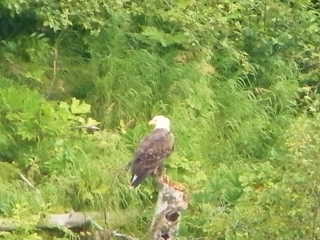
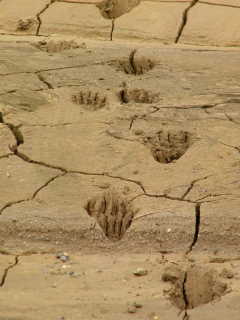
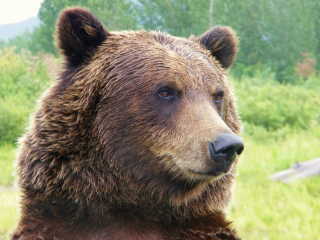

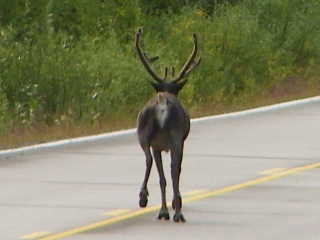

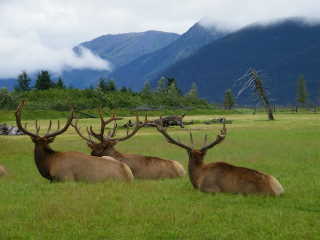
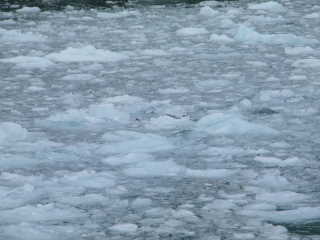
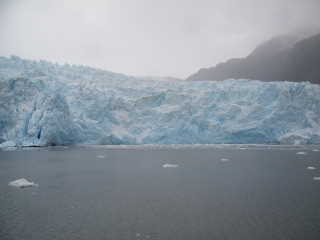
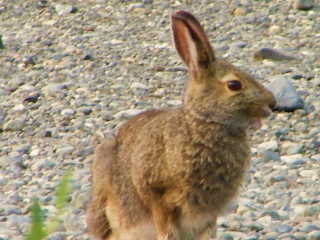

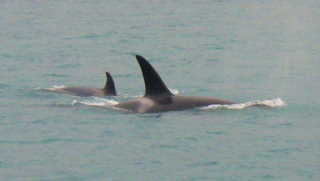
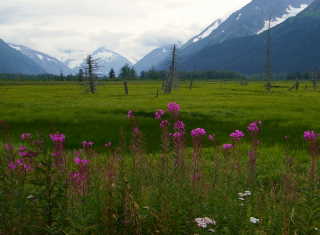

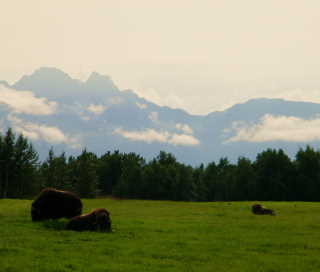
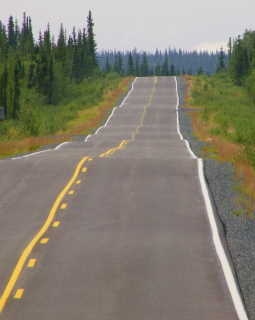 Saturday, 29 August 2009 06:50:51 (GMT Daylight Time, UTC+01:00)
Saturday, 29 August 2009 06:50:51 (GMT Daylight Time, UTC+01:00)  Alaska
Facts and more facts.....
Alaska
Facts and more facts.....
FACTOIDS:
• Alaska is 586,000 square miles and in the Aleut language, Alaska means “The Great Land”.
• Alaska is one-sixth the size of the Lower 48 (the other states of the USA), and with 30,000 miles of coast- line, it has more coastline than the rest of the states combined.
• Alaska has 54 million acres dedicated to 17 national parks, which is 13% of the state’s landmass!
• There is 29,000 square miles of ICE in Alaska! That is 5% of Alaska!
• Alaska celebrates its 50th birthday of being a State in 2009!
• Cheechako – describes a new-comer, generally someone who hasn’t spent a winter in Alaska.
• Sourdough – Any Alaska or Yukon old-timer.
• James Cook first explored Cook Inlet in 1778. He also reached Hawaii that same year.
• The Musk Ox has survived since the ice age. It is able to survive the harsh arctic winter temperatures by growing a thick layer of QIVIUT (pronounced Ki-vee-ute) over their entire body. This fine under wool is shed in the spring when it is no longer needed. They have the warmest fur of any animal (8 times warmer than sheep’s wool!) The Musk Ox farm at Palmer is the only place in the world to gather this wool and send it away to be made into something useful (scarves, hats etc). This fibre is one of the warmest and rarest on earth and feels extremely light.
• The Alaska Wildlife Conservation Centre is a non – profit organisation dedicated to preserving Alaska’s wildlife through conservation, education and quality animal care (www.awcc.org). The centre takes in orphaned and injured animals year round. Animals that cannot be released back into the wild are given a permanent home there.
• Seward is known as the land which has been carved by glaciers and polished by the sea. It has tidewater glaciers that thunder into the sea.
• The city of Seward was named for President Lincoln’s Secretary of State, William Henry Seward, the man who engineered the purchase of Alaska from Russia in 1867.
• In 1867 the USA paid 7.2 million dollars to Russia for the purchase of Alaska. This was equal to 2 cents per acre (roughly 1 penny per acre).
• The Harding Ice field is the largest within the USA boundaries. It spans a massive area of 70 miles long and 30 miles wide.
• The Kenai Fjords National Park consists of 600,000 acres!
• In Alaska law, motorcyclist must wear a helmet only until they are 18, however any age passenger must always wear a helmet.
• Anchorage is home to half of the State of Alaska’s population.
• Almost 30,000 Alaskan natives live in the Anchorage area. The largest native village in the State (Eklutna) is found here.
• At least 1000 moose live within the Anchorage City Limits!
• The 730,000 acre Tetlin Wildlife Refuge produces up to 100,000 ducklings a year. There are also over 186 different bird species here.
• In some parts of Alaska there are some days which are considered just TOO COLD for school. Usually the cut off point is around 50-55 degrees F -below zero – BUT – not in TOK, where school goes on no matter what the temperature! (-80 degrees F?!)
• A working sled dog needs up to 10,000 calories a day during the Iditarod sled dog race to Nome. Dogs in Alaska traditionally ate dried and frozen salmon during the winter.
Saturday, 29 August 2009 06:42:44 (GMT Daylight Time, UTC+01:00)  Alaska
Wildlife wonders..............
Alaska
Wildlife wonders..............
WILDLIFE FACTOIDS:
• GRIZZLY BEARS- can weigh up to 800-1500 pounds and range in colour all shades from blonde to black. They have a shoulder hump and a dished face. 70-80% of their diet is plants and they use very long blunt claws to dig. The rest of their diet is made up from small mammals, and salmon! Grizzly bears have difficulty in climbing trees but are still reach heights of 12 feet up a tree trunk! While they sleep in the winter, their heart beat drops from 70 beats to around 10 beats a minute. They recycle stored fat, carbohydrates and muscle proteins in a way that allows them to survive without eating or drinking for months.
• BLACK BEARS – can weigh 220-330 pounds, and also range in colour from black to brown to blonde. They have no shoulder hump and shorter claws. 95% of their diet is plant material. Black bears loose 20-40% of their body weight during winter hibernation and so they must consume 20,000 calories per day prior to hibernation! During those winter months they ‘den’ in caves or hollow trees. This is where their tiny cubs are born, and where they are nursed until they emerge from their dens in the spring.
• MOOSE –are the largest member of the deer family. They have very long legs, a humpback, a short tale, and a flap of covered skin that hangs beneath their chin (called a bell). Males are the only ones to have antlers. Moose can swim continuously for several hours, dive down to depths of 20 feet, and remain submerged for up to a minute!
• ELK – resemble very large white-tailed deer. They weigh 660-770 pounds fully grown and males have large antlers. Elks are highly vocal animals, they bark to warn each other of danger and communicate by grunting and squealing to each other.
• CARIBOU – Both male and females grow antlers, however the males antlers are massive, in comparison to the females. Their favourite winter food of lichens, grow very slowly, but the caribou’s erratic movements keep it from becoming overgrazed. They have large hooves that keep them above snow through the winter months and paw through the snow in search of lichens. There are over a million caribou in Alaska.
• BISON- can be recognised by their dark brown, shaggy furred head, lighter coloured body, massive humped shoulder and sharp upturned horns. If Bison are caught in a storm, they will face the wind, using their woolly head and shoulder coat to reduce the chill, before it reaches the rest of the body.
• TUFTED PUFFINS- inhabit burrows.
• HORNED PUFFINS- occupy naturally occurring rock crevices.
• DALL SHEEP – live in high, alpine tundra on ridges. They eat grasses, lichens and moss. Rams have large, curling horns which grow to a ‘full curl’ in eight years.
• WOLVES – are social animals and live in packs of six or seven. They eat animals ranging from tiny voles and ground squirrels to caribou and moose.
• AMERICAN WOOD FROGS- freeze solid during the winter, even their blood and eye balls, and their hearts stop beating. They replace much of the water inside their cells with glucose and create their very own antifreeze so that their cell walls are not permanently damaged. Within hours, as temperatures rise in the spring – these frogs thaw out and hop away as if nothing has happened – how is this possible?
• SEA OTTERS – are an endangered species in western Alaska. It is the smallest marine mammal and the largest member of the weasel family. They like to eat crabs, clams, sea urchins and octopus. Sea otters have the densest fur in the animal kingdom; up to a million hairs per square inch!
• BALD HEADED EAGLES- are the symbol of the USA. They opportunistically eat other birds, fish and carrion. They have a majestic and proud beauty.
• HARBOR SEALS- are members of the true seal family and have no external ear flaps. They eat fish such as Capelin and swimming crustaceans, such as shrimp.
• HUMPED BACK WHALES – exhales water at over 300 mph (480 kph) in a fine spray. They surface every 5 to 8 minutes before diving to continue their 18 –hour-long feeding. Females must consume about 800 pounds (360 kgs) of krill and schooling fish a day, sieved through baleen instead of teeth, to support their 90,000 pound (41,000 kg) weight. A whale fluking (lifting its tail out of the water) is beginning a deep dive down and saying in Whale language “diving deeper; see you later!”
Saturday, 29 August 2009 06:41:15 (GMT Daylight Time, UTC+01:00)  Alaska
Alaska